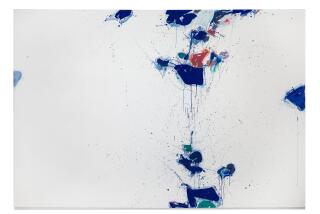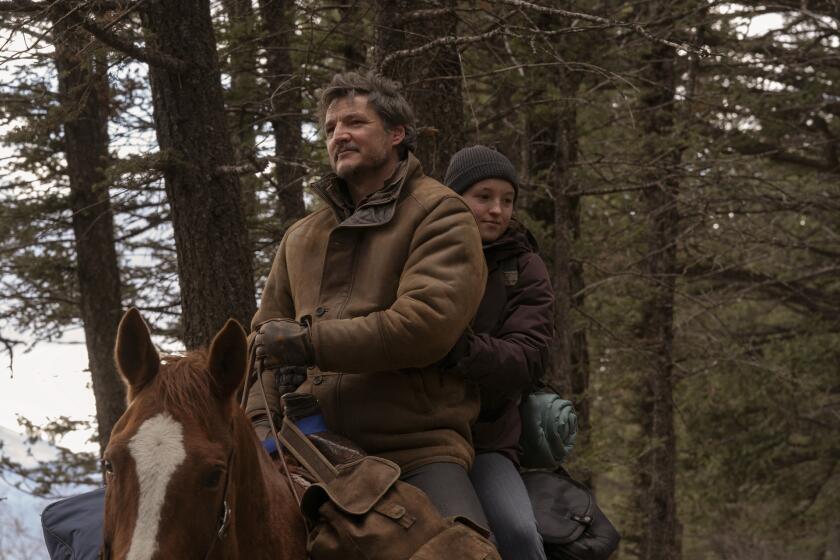Far East treasures in San Francisco
- Share via
Reporting from San Francisco — Doris Duke. It’s a mighty big name in philanthropic circles.
The only child of tobacco and hydropower magnate James Buchanan Duke, she inherited his $80 million estate in 1925, when she was 12. The “poor little rich girl” grew into an elegant woman whose money and glamorous lifestyle made her a media star, but she gave away more than $400 million before her death in 1993 and left her fortune to the Doris Duke Charitable Foundation.
She also traveled extensively and collected a wide range of art. But until about a decade ago, her name didn’t mean much to Forrest McGill, an authority on Southeast Asian art who is chief curator at this city’s Asian Art Museum.
That changed when he got a call from Johnson S. “Jack” Bogart. As head of the Asian’s board, Bogart, who died last year, was spearheading a campaign to move the San Francisco institution from its original home in Golden Gate Park to the former Main Library in the Civic Center.
“Jack was going to the Duke foundation to see if we could get money for this building,” McGill recalled at the museum. “He heard about the Doris Duke Southeast Asia art collection, called me up and said, ‘What about this, Forrest?’
“I made the classic curator’s mistake, which was to say that I had never heard of it and therefore it must not be any good. He said, ‘Well, you better go have a look anyway.’ I drove out to Duke Farms, near Princeton University, and was completely knocked flat.”
When McGill arrived at the 2,700-acre estate in New Jersey that had been Duke’s principal home, he found one of the most important collections of 18th and 19th century Southeast Asian art outside Asia. More than 400 museum-quality objects and 1,800 other items -- sculptures, paintings, manuscripts, ritual vessels, furniture, textiles, costumes, ceramics and puppets -- were stashed in four makeshift storage spaces, including an indoor tennis court.
Today 190 of the artworks, including pieces of astonishing craftsmanship and rarity, belong to the Asian, where many of them are on view for the first time in “Emerald Cities: Arts of Siam & Burma, 1775-1950.” All 140 works in the exhibition come from the museum’s collection; about 70% are gifts from Duke’s foundation. Its mission: to “improve the quality of people’s lives through grants supporting the performing arts, environmental conservation, medical research and the prevention of child maltreatment, and through preservation of the cultural and environmental legacy of Doris Duke’s properties.”
The show is a wonderland of intricately carved, inlaid, gilded, painted, woven and embroidered objects arranged in geographic sections. Images of Buddha and flora and fauna abound. So do spires and flame-like tendrils or “goose tails,” inspired by Southeast Asian thought, equating the flight of wild geese to spiritual striving.
“The central parts are very serious and religious,” McGill said of the artworks. “But the artists really liked to get playful around the sides and corners. There are lots of rabbits, squirrels and birds doing funny things.”
Among prizes collected by Duke that landed at the Asian is a pair of roughly 4-foot-tall sculptures from Central Thailand depicting mythical bird-men that inhabit a legendary forest in Buddhist lore.
“They are just unbelievably rare,” McGill said, pointing out richly decorated surfaces with remnants of lacquer, gilding and mirrored-glass inlay. “And look at this manuscript. It was folded up and put in a cabinet in one of her storerooms. I started unfolding it and just flipped out. It’s so gorgeous that even if you didn’t know what it was you would be impressed.”
Another point of pride is a complete set of 13 paintings from central Thailand, used in religious festivals to tell the penultimate -- and most important -- story of Buddha’s previous lives as a bodhisattva. Chapter by chapter, the paintings follow the bodhisattva Prince Vessantara’s increasingly difficult practice of selfless generosity as he gives away his rain-making elephant, his children and his wife.
To her taste
That works such as these were all but unknown to scholars for decades is largely a matter of taste. “In the 1950s and ‘60s, when Doris Duke was collecting this 18th and 19th century material, it was not fashionable at all,” McGill said. “This was not a prestigious thing for a wealthy person to collect. Her advisors and other art people would have been saying, ‘Why are you doing that?’ To her great credit, she had the confidence of her own taste, to find an almost completely uncollected area and just go for it. Consequently, she ended up with the largest collection of pre-modern Thai painting in the world. There is not a comparable collection in Thailand, public or private.”
Duke was smitten with Southeast Asian art in 1935, when she took a honeymoon tour to India, Thailand, Indonesia and other Asian countries with her first husband, James H.R. Cromwell, a dashing American sportsman and advertising executive. The marriage fell apart in 1943; her second attempt at wedded bliss, with Porfirio Rubirosa, a society figure and diplomat from the Dominican Republic, lasted only a year.
The tobacco heiress quietly amassed her Southeast Asian collection with the help of an agent in Bangkok, but other aspects of her life were frequently in the news. Her decision to bequeath $5 million to her butler, Bernard Lafferty, and make him a co-executor of her estate at an annual salary of $500,000, set off a legal battle. The scandal inspired the 2006 film “Bernard and Doris,” starring Susan Sarandon and Ralph Fiennes.
Duke planned to create a cultural park and museum for the artworks in Honolulu, where she built a house for her Islamic collection in 1937. When she failed to get the property she wanted, the Southeast Asian material remained in storage. Her trustees considered putting the collection up for auction after her death but eventually decided to disperse it to museums.
When word got out, the Asian wasn’t the only suitor, but it fared well, sharing rights of first selection with the Walters Art Museum in Baltimore. The museums took turns choosing works from their wish lists to complement their existing holdings. The Walters received 150 objects. In all, the foundation has donated about 700 works to 20 museums across the country, including the Los Angeles County Museum of Art.
The San Francisco institution announced its gift in 2002, but it has taken years to conserve the objects and prepare them for exhibition. “Some things were in terrible shape,” McGill said, referring to works made for short-term use, then cast aside, piled up in the corners of temples or damaged by the tropical climate. More trouble came in 1999, shortly after the curator’s visit to Duke Farms, when Hurricane Floyd brought torrential rains that flooded one of the storage areas.
The Asian’s conservators spent an estimated 6,000 hours studying and treating the Duke material. In some cases, they were very successful, cleaning and stabilizing fragile items, reassembling complicated objects and replacing missing parts. But some of the paintings have suffered irretrievable losses.
“If these were European paintings from the early 19th century, you would expect them to be in essentially flawless shape,” McGill said. “But you can see where these were carelessly folded or rolled up, before Doris Duke got them. It’s just a wonder that she was able to accumulate as much as she did and keep it.”
More to Read
The biggest entertainment stories
Get our big stories about Hollywood, film, television, music, arts, culture and more right in your inbox as soon as they publish.
You may occasionally receive promotional content from the Los Angeles Times.










